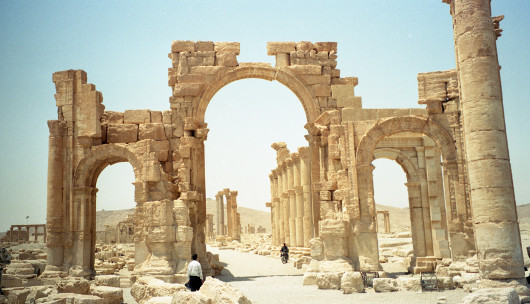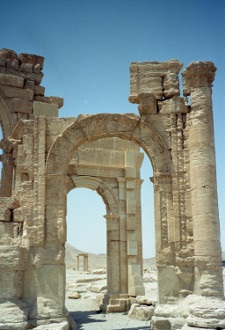Picture this

Archaeologists have launched an appeal for people to crowd source photographic evidence of the world’s most important monuments and historic sites before they are lost forever.
Researchers from the University of St Andrews are joining forces with the Universities of Bradford and Nottingham to provide a priority response to archaeological sites that have been destroyed or are under threat as a consequence of recent conflict, terrorism and natural disaster.
The project, named Curious Travellers*, will gather photographs and related information to document and create a virtual reconstruction of damaged monuments around the world, including those in war-torn Syria and Libya.
Using state-of-the-art data mining technology, the team will gather visual material already online and on social media, as well as through a new global appeal for the public to participate via the web.
All content gathered via digital documentation methods, crowd sourcing and novel web applications will be used to recreate monuments – and details of their heritage – in 3D, preserving them for future generations.
Reconstruction work will be led by the Bradford Visualisation team, based in the School of Archaeological Sciences at the University of Bradford. Computer specialists from the University of Nottingham will lead on web- and data-mining, whilst site context reconstruction will be undertaken by remote sensing specialists at the University of St Andrews.
 The new project – named after a line in a letter by the 16th century martyr Henry Walpole – was the brainchild of Dr Richard Bates of the University of St Andrews, and builds on research undertaken by the Department of Earth and Environmental Sciences and the Schools of Computer Science and Classics at St Andrews.
The new project – named after a line in a letter by the 16th century martyr Henry Walpole – was the brainchild of Dr Richard Bates of the University of St Andrews, and builds on research undertaken by the Department of Earth and Environmental Sciences and the Schools of Computer Science and Classics at St Andrews.
Dr Bates, a Senior Lecturer in Earth Sciences, explained: “The idea that led to the project began during a conversation with my wife whilst watching the news one evening. We saw the latest video of destruction in Palmyra and we talked about the 3D digital reconstructions that we are already working on for iconic UK sites, such as Stonehenge and the World Heritage sites of Orkney.
“Understanding and preserving the past is important to us as well as the local people in the conflict areas. In a small way we hope that our work might help them to achieve a long-term memory of their sites for them, their children and future generations.”
The research team consists of Dr Richard Bates (University of St Andrews); Dr Andrew Wilson, Dr Chris Gaffney and Professor Vince Gaffney (University of Bradford); and Dr Eugene Ch’ng (University of Nottingham).
The project was funded £305,000 by the Arts and Humanities Research Council (AHRC).
Professor Vincent Gaffney, Anniversary Chair in Landscape Archaeology at the University of Bradford, said: “The immense media coverage relating to the destruction of prominent sites in Syria hides the true scale of cultural destruction due to conflict, looting and other forms of cultural vandalism. Recently, specific sites have also been targeted in Libya and, if we look back over time, we can identify the widespread loss of other sites, for example those throughout Afghanistan in the early 2000s where the Bamiyan Buddhas were destroyed.”
Dr Bates added: “The project serves in anticipation of further loss, at a time when current crises overwhelm recent catastrophes in the mind of the general public. We will never be able to physically rebuild all the monuments impacted in recent conflicts but we hope to do more than preserve their memory through this project. We hope that world-wide people will come together and respond with their images to be part of this project.”
More information is available from the Visualising Heritage website.
*“At last some curious traveller from Lima will visit England, and give a description of the ruins of St. Paul’s, like the editions of Balbec and Palmyra.” Letter from Horace Walpole, Earl of Orford, to Sir Horace Mann (1774)
Note to editors
Dr Richard Bates is available for interview via the St Andrews Press Office – contacts below.
Picture captions
This page (top & bottom): Syria – Triumphal/Monumental Arch, Palmyra, destroyed by Islamic State (Isis) in 2015. Credit: Stephen Rowland, Oxford Archaeology North
New page (feature): Temple of Zeus colonnade, Cyrene. As with the Roman Forum the standing structures are an amalgam of original material and new material used during the structures re-erection by the excavators. Credit: Gareth Sears, University of Birmingham
News page (thumbnail): Temple of Baal Shamin, Palmyra, also destroyed by Islamic State in 2015. Credit: Stephen Rowland, Oxford Archaeology North
Issued by the Press Office, University of St Andrews, contactable on 01334 462530 or email [email protected].
Category Research